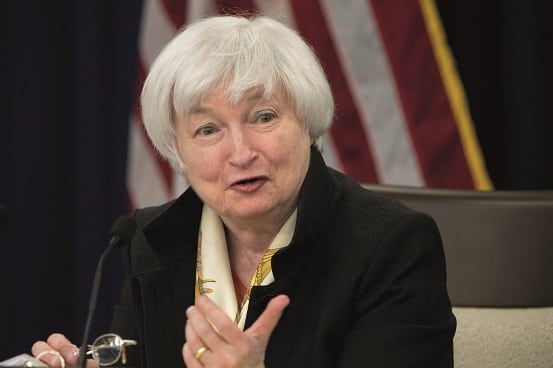Earlier this month, President Donald Trump denied Yellen a second term as chairman and nominated Powell to replace her upon completion of her first term in February 2018.
Yellen was expected to remain as a board member until 2024.
In a letter addressed to Trump, she noted it had been a “privilege” and “honour” to serve the board “over the course of three eventful decades.”
She wrote: “I am enormously proud to have worked alongside many dedicated and highly able women and men, particularly my predecessor as chairman, Ben S Bernanke, whose leadership during the financial crisis and its aftermath was critical to restoring the soundness of our financial system and the prosperity of our economy.”
Yellen joined the Fed board in 2004 as president of the Federal Reserve Bank of San Francisco. In 2010, she became vice-chairman and was appointed chairman in 2014 by then-President Barack Obama.
“As I prepare to leave the board, I am gratified that the financial system is much stronger than a decade ago, better able to withstand future bouts of instability and continue supporting the economic aspirations of American family and businesses,” the letter read.
“I am also gratified by the substantial improvement in the economy since the crisis. The economy has produced 17 million jobs, on net, over the past eight years and, by most metrics, is close to achieving the Federal Reserve’s statutory objective of maximum employment and price stability.”
However, she added that “sustaining this progress will require continued monitoring of, and decisive responses to, newly emerging threats to financial and economic stability.”
She referred to the Fed as a “strong institution” focused on carrying out its “public mission with integrity, in a professional, non-partisan manner”.
Yellen concluded: “I am confident that my successor as chairman, Jerome H Powell, is deeply committed to that mission and I will do my utmost to ensure a smooth transition.”
Rocky ride
Mark Holman, chief executive at TwentyFour Asset Management, argued the next chairman was unlikely to have “a smooth ride” and could possibly have to “negotiate a recession when this cycle finally comes to an end.”
“No easy task when the Fed is still already highly accommodating and there is little ammunition to stimulate with as things stand,” he said.
“This is the principal reason why we think the Fed will push ahead with a series of rate hikes starting in December this year and adding probably three more in 2018. They have already achieved one of their two goals – full employment – but the 2% inflation target remains hard to reach.
“However, despite this, the less risky path for the Fed is to continue to hike gradually so that they have more firepower for when this cycle does finally end.”
Holman added that one worry to this is that the Fed will need four new members next year and a vice chairman, “but with the continuity vote already decided through the appointment of Mr Powell we see a level of consistency in policy as our base case with the new appointments.”










